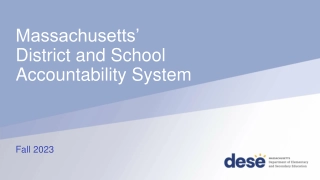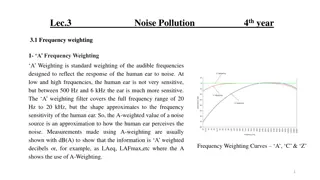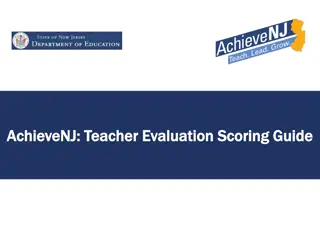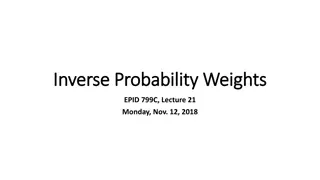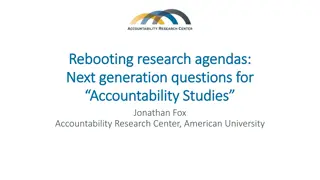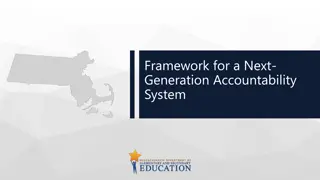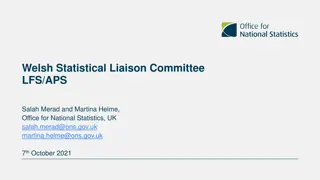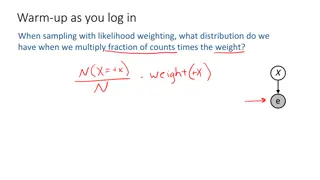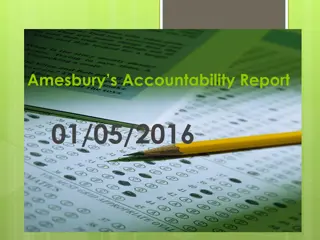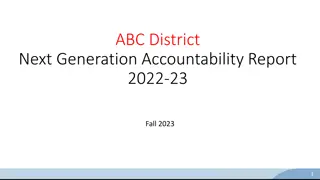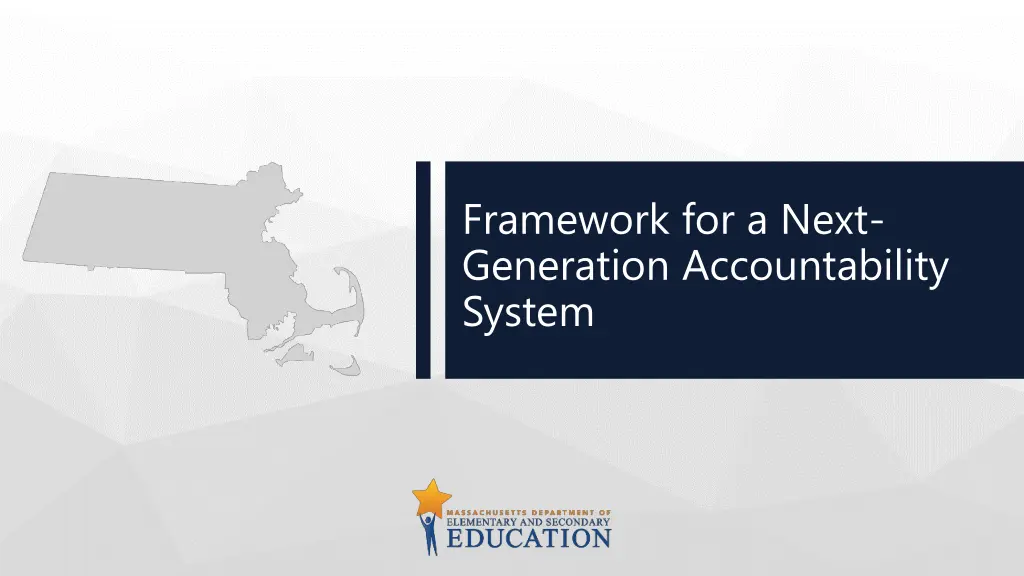
Next-Generation Accountability System Framework Discussion
Explore the framework discussions for the next-generation accountability system presented at BESE meetings by the Massachusetts Department of Elementary and Secondary Education. Delve into the decision-making process for weighting indicators and consider the impact on achievement and growth measures in the education system.
Download Presentation

Please find below an Image/Link to download the presentation.
The content on the website is provided AS IS for your information and personal use only. It may not be sold, licensed, or shared on other websites without obtaining consent from the author. If you encounter any issues during the download, it is possible that the publisher has removed the file from their server.
You are allowed to download the files provided on this website for personal or commercial use, subject to the condition that they are used lawfully. All files are the property of their respective owners.
The content on the website is provided AS IS for your information and personal use only. It may not be sold, licensed, or shared on other websites without obtaining consent from the author.
E N D
Presentation Transcript
Framework for a Next- Generation Accountability System
Accountability discussions with the Board December BESE meeting presented framework for the next-generation accountability system January BESE meeting discuss weighting of indicators within the revised accountability system February/March BESE meeting vote to put new accountability regulations out for public comment May/June BESE meeting- vote on new regulations after public comment has been considered 2 Massachusetts Department of Elementary and Secondary Education
Weighting decisions to be made Three weighting decisions to be made oWeighting of indicator categories in the school percentile calculation oWeighting of meeting target points oWeighting of All students vs. Lowest Performing students 3 Massachusetts Department of Elementary and Secondary Education
Weighting of Indicator categories for percentile calculation High Schools Indicator Non-High Schools ELA, math, & science achievement values (based on scaled score) ELA, math, & science achievement values (based on scaled score) Achievement Student Growth Student growth percentile Student growth percentile Four-year cohort graduation rate Extended engagement rate Annual dropout rate High School Completion English Language Proficiency Progress made by students towards attaining English language proficiency Progress made by students towards attaining English language proficiency Chronic absenteeism Percentage of students passing all grade 9 courses Percentage of students completing advanced coursework Additional Indicators Chronic absenteeism 4 Massachusetts Department of Elementary and Secondary Education
Considerations for weighting achievement and growth The current ratio of achievement and growth is 3 (achievement) to 1 (growth) Impact of increasing weight of growth in system: oCould increase the differentiation between high and low achieving schools oIncreases the value of a normative measure where someone will always be in the 1stand 99thpercentile oDecreases the value of 3rdgrade assessment results because there are no growth values for students in 3rdgrade oDecreases value of science assessment in system (no SGP) 5 Massachusetts Department of Elementary and Secondary Education
Considerations for weighting achievement and growth All indicators need to be included in the weighting Progress towards English language proficiency only applies to a subset of schools and weighting needs to be flexible Ratio between achievement and growth can be held constant between non-high schools and high schools but actual weightings will differ Recommendation: maintain achievement to growth ratio of 3 to 1 6 Massachusetts Department of Elementary and Secondary Education
Weighting of percentile indicators in non-high schools Current Weighting 3:1 With ELL Indicator Measures No ELL ELA, math, & science achievement values (based on scaled score) Achievement 60% 67% Student Growth ELA/Math Student Growth Percentile (SGP) 20% 23% English Language Proficiency Progress made by students towards attaining English language proficiency 10% Additional Indicators Chronic absenteeism 10% 10% 7 Massachusetts Department of Elementary and Secondary Education
Weighting of percentile indicators in high schools Current Weighting 3:1 With ELL Measures Indicator No ELL ELA, math, & science achievement values (based on scaled score) Achievement 40% 48% Student Growth ELA/Math Student Growth Percentile (SGP) Four-year cohort graduation rate Extended engagement rate Annual dropout rate 20% 22% High School Completion 20% 20% English Language Proficiency Progress made by students towards attaining English language proficiency 10% Chronic absenteeism Percentage of students passing all grade 9 courses Percentage of students completing advanced coursework Additional Indicators 10% 10% 8 Massachusetts Department of Elementary and Secondary Education
Weighting of meeting target points Exceeded target 4 Declined No change Improved Met target 0 1 2 3 Proposed model has equal intervals between categories of performance against meeting targets Recommendation is to maintain these intervals until multiple years of data allow for impact analysis of unequal weighting of points 9 Massachusetts Department of Elementary and Secondary Education
Weighting of All Students vs. Lowest Performing Students Points assigned Indicator All students 3 2 2 4 3 2 3 19 19/28 = 67.8% Lowest performing students 2 2 1 4 4 ELA scaled score Math scaled score Science achievement ELA SGP Math SGP EL progress Chronic absenteeism Total Percentage of possible points Average Percentage (50/50 weighting) 0 = Declined 1 = No change 2 = Improved 3 = Met target 4 = Exceeded target 4 17 17/24 = 70.8% 69.3% 10 Massachusetts Department of Elementary and Secondary Education

